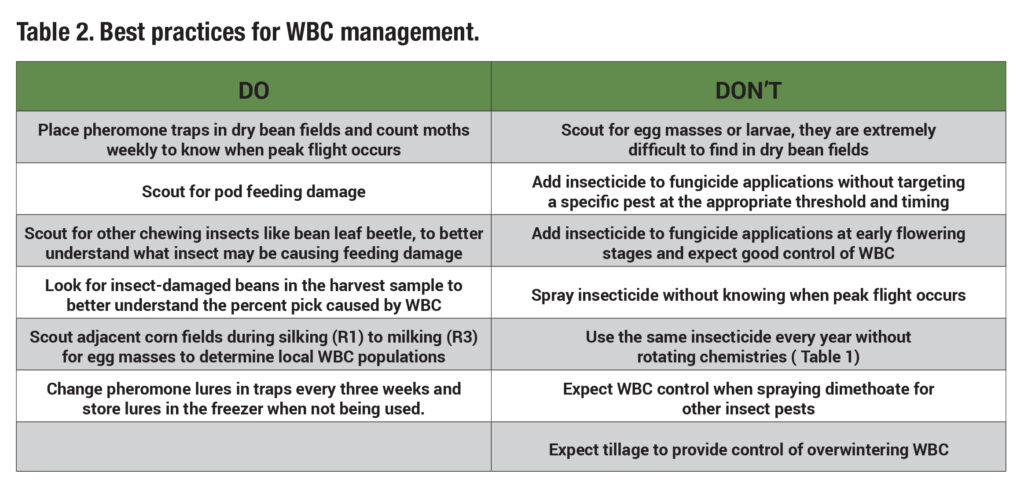co-authored by: Meghan Moran
Western bean cutworm can significantly reduce the quality and yield of your dry bean crop. Below are best practices for minimizing this insect’s impact to your bottom line.
The simple answer
Spraying insecticide for western bean cutworm (WBC) control in Ontario dry bean fields is warranted only if ALL of the following criteria are met.
- At least 150 moths have been captured in a trap at the field.
- Peak moth flight has passed, and the number of moths caught in traps is starting to decline.
- There are pods on the plants.
- You can find pod damage.
A little more information
Although many dry bean fields are in regions with high WBC pressure, pheromone traps are critical to understanding the timing and abundance of WBC moth arrival (Figure 1). The total number of moths caught in trap indicates activity (Figure 2). Low activity (<150) indicates that the field is not attractive to the moths. High activity (>150) – although not an insecticide action threshold – indicates that other criteria need to be investigated and met for insecticide application to be justified.
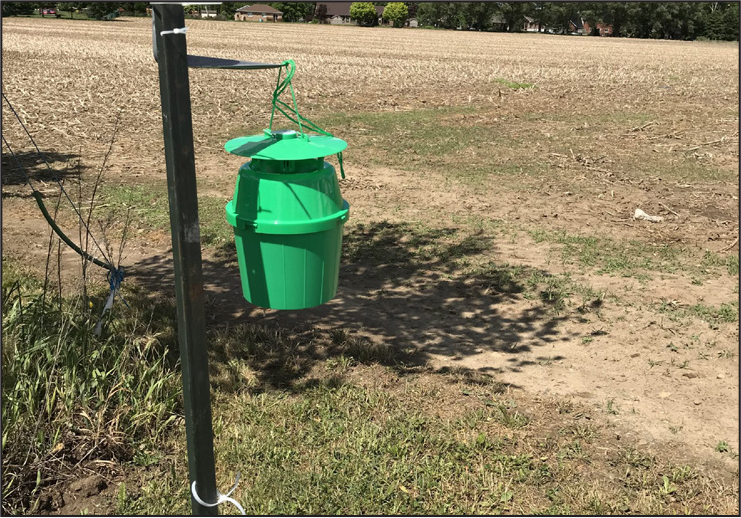
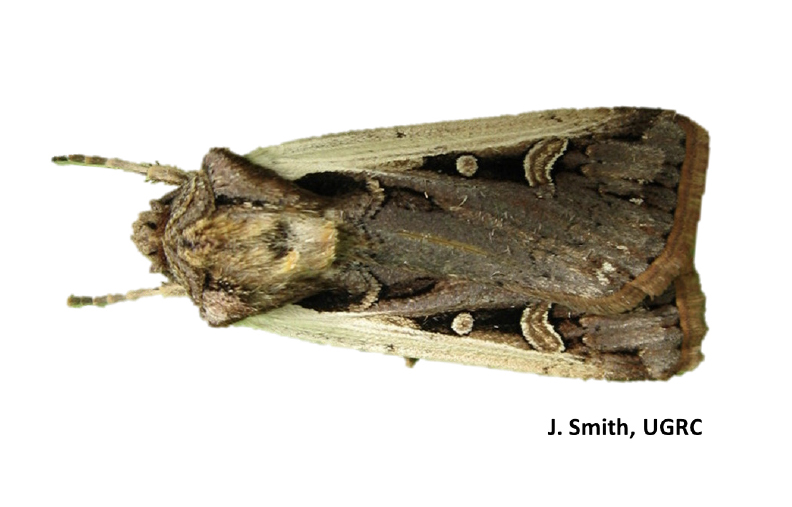
Peak flight describes the period when the highest numbers of moths are active in an area and are likely laying eggs. Spraying insecticide 10-20 days after peak flight targets the highest number of larvae emerged from these eggs. Spraying prior to peak flight will leave the field unprotected from larvae that emerge later.
Pods are the main tissue that needs to be protected from WBC feeding. Larvae hide in soil during the day and feed on pods at night. Maximizing spray coverage on pods provides a greater chance for larvae to ingest the insecticide while feeding. Larvae also feed on flowers and may feed on leaves when they first hatch, but leaf feeding is very minor. Spraying during vegetative stages will not control WBC.
If you see pod feeding (Figure 3), an insecticide application is recommended. Thorough scouting for pod damage ensures an insecticide is required and limits injury to off-target insects. Beneficial insects and entomopathogens may be contributing to mortality of WBC in the field. While pheromone traps provide information on the local abundance of WBC moths, they do not provide information on egg laying and crop injury.

The full story
WBC have one generation per year and overwinter as pre-pupae in Ontario soils, emerging as moths in early July (Figure 4). Moths also migrate in each year from neighbouring states. Moths are nocturnal and the females live for an average of nine days, laying up to 600 eggs in their lifetime. Eggs are laid in clusters deep in the dry bean canopy, on upper or lower surfaces of dry bean leaves. About a week after the eggs are laid, they turn dark purple, indicating they will hatch within a day or two. Larvae first feed on their egg shells, before moving to feed on leaves (minor), flowers and pin pods (Figure 5). As they mature, larvae move to the soil during the day, and climb plants to feed at night. They may travel many meters, from plant to plant, burrowing into pods to feed directly on the beans (Figure 6).

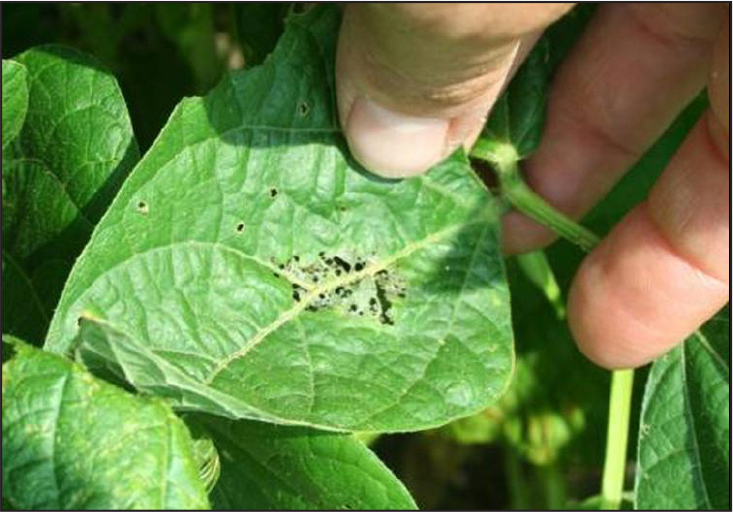
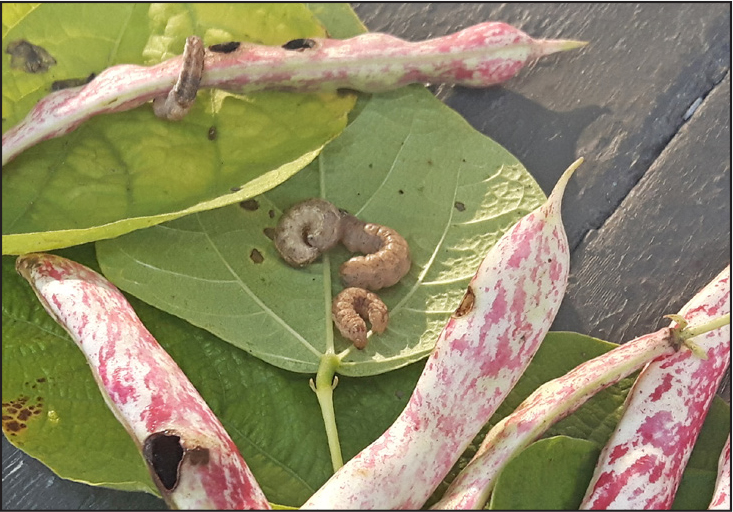
In Ontario, WBC are attracted to corn fields prior to tasseling. Once tassels have dried and turned brown, more moths are typically captured in traps located in dry bean fields than corn. Ontario data on yield and quality reductions in dry beans from WBC feeding is scarce. Yield loss can occur when WBC feed on flowers, pin pods, and beans. Quality loss occurs with feeding on pods and the beans within. Seeds can be shriveled or damaged from direct feeding (Figure 7) and holes into the pod allow for the introduction of pod diseases and seed discolouration. Damaged beans (pick) will be lost out the back of the combine or will have to be removed with gravity tables or optical sorters. In some bean types, such as cranberry, beans will discolour when exposed to the air after WBC chew a hole in the pod (Figure 8).


Peak moth flight varies by region, so it’s best to have traps in your own fields. Multi-year surveillance in Ontario has shown that peak flight from
2018 to 2021 occurred August 1 to 7.
Typical insecticide spray date for WBD:
- If peak flight is July 25 (earliest observed) – spray ~August 8
- If peak flight is August 4 (typical, on average) – spray ~August 18
- If peak flight is August 20 (latest observed) – spray ~ September 3

